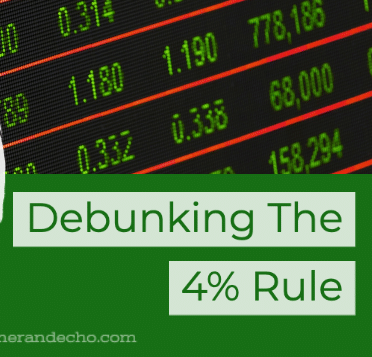
Critics of the 4% rule argue that it doesn’t hold up in today’s environment because, one, bond yields are so low, and two, because it fails to account for rising expenses (inflation) and investment fees (costs matter). We’re also living longer, and there’s a movement to want to retire earlier. So shouldn’t that mean a safe withdrawal rate of much less than 4%?
Financial planning expert Michael Kitces takes the opposite view. He says there’s a highly probable chance that retirees using the 4% rule will come to the end of 30 years with even more money than they started with, and an extremely low chance they’ll spend their entire nest egg.
The problem lies in the data and testing for the absolute worst case scenarios, which in Bengen’s research included the Great Depression. Bengen looked at rolling 30-year periods to test the safe withdrawal rate and found the worst case scenario was retiring right before the Great Depression in 1929. Even with that terrible timing, a retiree could safely withdraw 4.15% of his or her portfolio.
Are FIRE savers bad at math?
Kitces broadened the data set and found two more ‘worst case scenarios’ which included 1907 and 1966. But  what was interesting is the average safe withdrawal rate throughout every available period in the data set was 6% to 6.5%.
what was interesting is the average safe withdrawal rate throughout every available period in the data set was 6% to 6.5%.
Even more remarkable, when starting with a $1M portfolio and using the 4 percent rule, retirees finished with the original million 96% of the time.
“Historical safe withdrawal rates aren’t based on historical averages. They’re based on historical worst case scenarios.” – Michael Kitces
If you’re interested in hearing more from Michael Kitces debunking the 4% rule then I highly recommend watching this in-depth interview Michael did on the Bigger Pockets Money podcast. It’s long (80 minutes) but well worth your time: Are FIRE savers bad at math?

